Best
Versatile Mandolin Strings
-
Overall: Long-lasting durability for extended playing sessions
-
Best Feature: Phosphor bronze construction for warm and bright tone
-
TedScore™: 9/10
Best
Overall Mandolin Strings
-
Overall: Exceptional Sound Quality with Rich Bass and Clear Highs
-
Best Feature: Loop-end Construction for Easy String Installation
-
TedScore™: 10/10
Best
Budget-Friendly Mandolin Strings
-
Overall: Long-lasting, thanks to the phosphor bronze coating
-
Best Feature: Precision wound for excellent intonation and durability
-
TedScore™: 9/10
**Changing mandolin strings might look tough, but don’t worry! Everyone starts somewhere, and if I managed it – you can too!**
With a little bit of knowledge and practice, you’ll be able to restring your mandolin like a pro.
In this post, I’ll cover everything you need to know about stringing a mandolin, from selecting the perfect strings to tuning your instrument to perfection.
Get ready to rock your mandolin with the right strings!
I’ll explore the different types of strings available and help you choose the perfect ones for your playing style and desired sound.
Then, I’ll dive into the step-by-step process of stringing your mandolin, complete with tips and tricks to make it a breeze.
So, let’s get grooving and string that mandolin!
Types of Mandolin Strings
There are a few different types to choose from when it comes to mandolin strings.
The most common types are steel, phosphor bronze, silk and steel. Each type has its own unique sound and feel, so it’s important to choose the right one for your playing style.
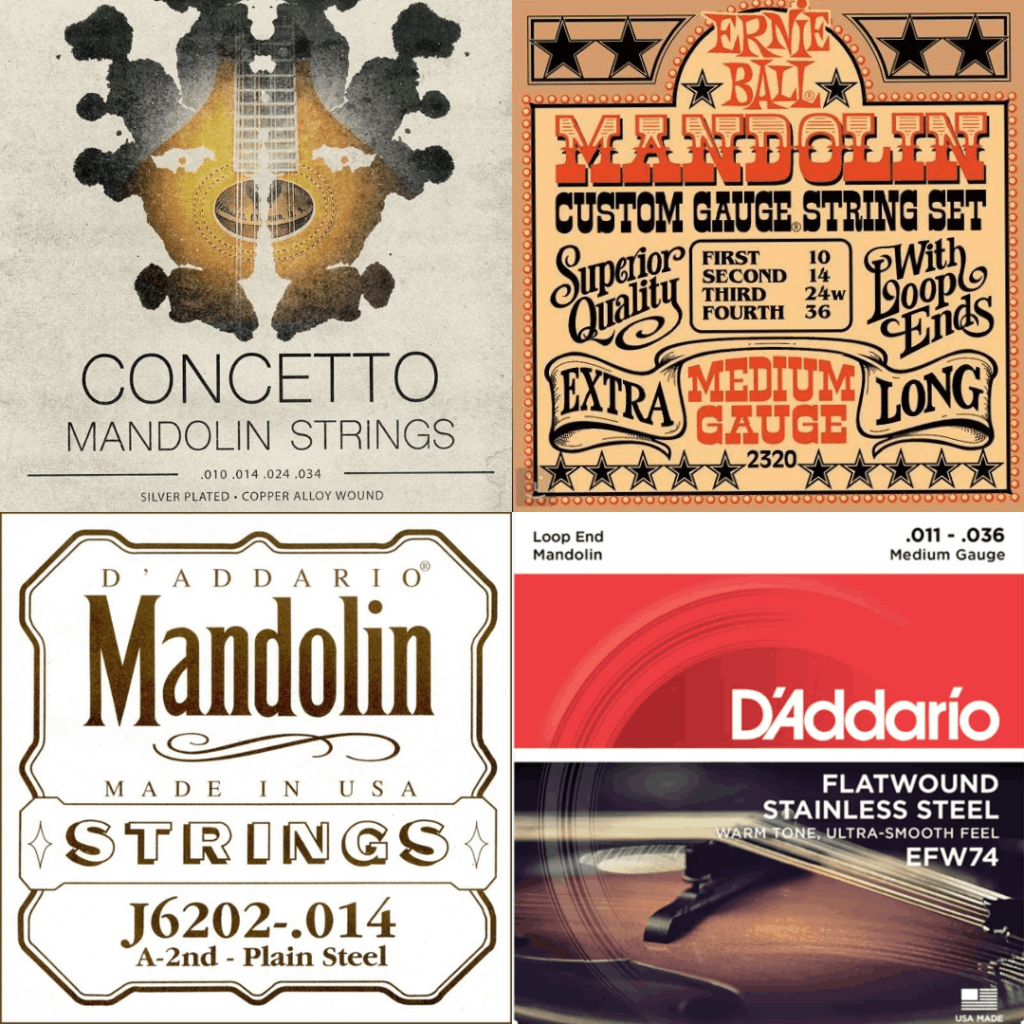
Steel strings are the most popular type of mandolin strings. They produce a bright and clear sound perfect for bluegrass and other styles of music that require a strong, cutting tone.

Phosphor bronze strings are a bit warmer and mellower than steel strings, making them a good choice for folk and Celtic music.

Silk and steel strings are the softest and warmest of the three types, making them a great choice for classical and jazz music.
Choosing the Right Gauge

The gauge of your mandolin strings refers to the thickness of the strings.
Thicker strings produce a louder and more sustained tone, while thinner strings are easier to play and produce a brighter sound.
The gauge of your strings will also affect the tension on your instrument, so it’s important to choose the right gauge for your mandolin.
High-tension strings are thicker and produce a louder, more powerful sound. They’re good for players who want a strong, cutting tone.
Low-tension strings are thinner and produce a brighter, more mellow sound. They’re good for players who want a softer, more delicate tone.
When choosing the gauge of your mandolin strings, it’s important to consider your playing style and the type of music you play.
If you play fast, intricate music, you may want to choose a thinner gauge to make it easier to play. If you play slower, more melodic music, you may want to choose a thicker gauge to produce a fuller, more sustained tone.
Best Strings for Mandolin
D'Addario EJ74 Phosphor Bronze Medium 11-40 Mandolin Strings
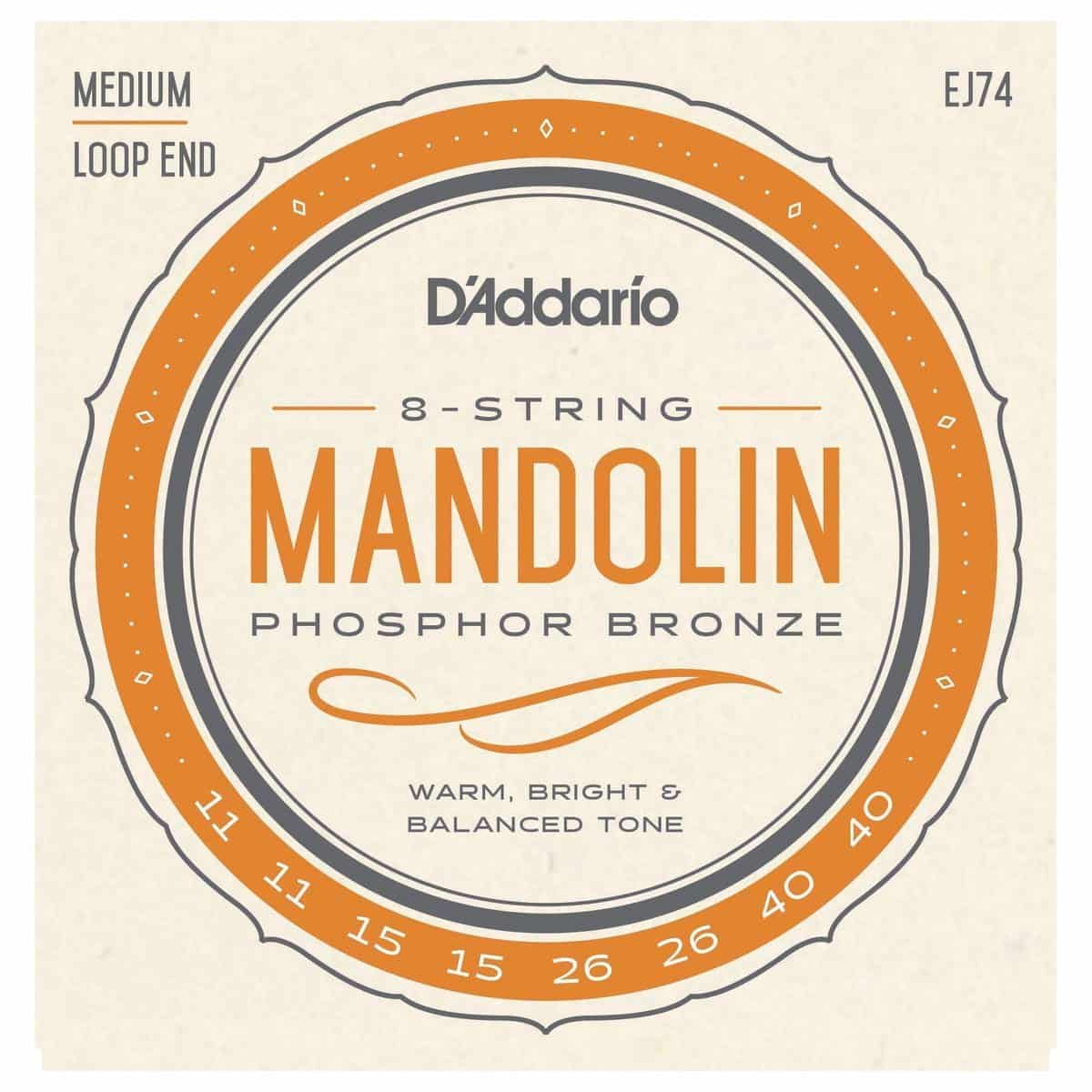
FEATURES: Hex core for increased stability and tuning accuracy
OTHER INFO: Phosphor bronze construction for warm and bright tone
- Vibrant tone that cuts through in any musical setting
- Excellent intonation and tuning stability
- Long-lasting durability for extended playing sessions
- Slightly higher price point compared to entry-level mandolin strings
When you click ‘Check Price’, you’ll see there are loads of great places to buy this item. Our personal favorite is Sweetwater for the US, and Thomann and Gear4Music for the UK & Europe.
They are the largest music retailers, with excellent customer service, competitive prices, really fast shipping, and the longest guarantees.
The professional musician who wrote this article combined many things,
from the product build, manufacturer’s reputation through to feedback
from other users, to create our famous TedScore™.
Ernie Ball Earthwood 2065 Mandolin Medium Set

FEATURES: Made from phosphor bronze for a rich, warm tone
OTHER INFO: Precision wound for excellent intonation and durability
- Balanced and consistent tone across all strings
- Easy to bend and play with smooth action
- Long-lasting, thanks to the phosphor bronze coating
- Slightly higher price compared to other string sets
- May take some time to break in and settle into the desired tone
When you click ‘Check Price’, you’ll see there are loads of great places to buy this item. Our personal favorite is Sweetwater for the US, and Thomann and Gear4Music for the UK & Europe.
They are the largest music retailers, with excellent customer service, competitive prices, really fast shipping, and the longest guarantees.
The professional musician who wrote this article combined many things,
from the product build, manufacturer’s reputation through to feedback
from other users, to create our famous TedScore™.
Martin M400 Mandolin 80/20 - Bronze Wound
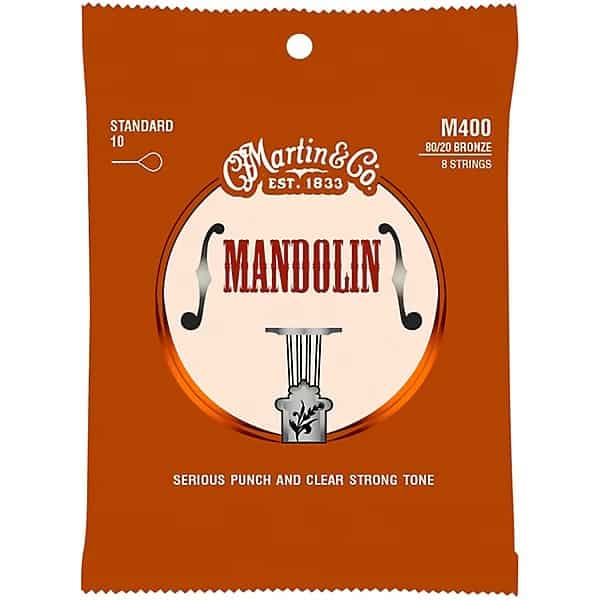
FEATURES: Loop-end Construction for Easy String Installation
OTHER INFO: Corrosion-resistant Coating for Long-lasting Performance
- Exceptional Sound Quality with Rich Bass and Clear Highs
- Excellent Projection for Live Performances
- High-quality Materials for Durability
- Slightly higher price point compared to other mandolin string
When you click ‘Check Price’, you’ll see there are loads of great places to buy this item. Our personal favorite is Sweetwater for the US, and Thomann and Gear4Music for the UK & Europe.
They are the largest music retailers, with excellent customer service, competitive prices, really fast shipping, and the longest guarantees.
The professional musician who wrote this article combined many things,
from the product build, manufacturer’s reputation through to feedback
from other users, to create our famous TedScore™.
Tools Needed for Stringing
Essential Tools
When it comes to stringing a mandolin, there are a few essential tools that you will need.
These tools will make the process much easier and ensure you get the best sound from your instrument.
Wire Cutters
Wire cutters are used to cut the strings to the correct length, ensuring they fit perfectly on your instrument. Make sure you use wire cutters specifically designed for guitar strings, as they will be much easier to use and produce a cleaner cut.
D'Addario Guitar Pro-Winder

COMES WITH: peg winder with a built-in clipper, bridge pin puller and string stretcher
FEATURES: Good for All Types of Guitar
D'Addario Guitar Pro-Winder
- Ergonomically designed
- Compact, Easy to Carry
- An All-in-One Tool for Restringing
- None!
When you click ‘Check Price’, you’ll see there are loads of great places to buy this item. Our personal favorite is Sweetwater for the US, and Thomann and Gear4Music for the UK & Europe.
They are the largest music retailers, with excellent customer service, competitive prices, really fast shipping, and the longest guarantees.
The professional musician who wrote this article combined many things,
from the product build, manufacturer’s reputation through to feedback
from other users, to create our famous TedScore™.
Tuner
A good tuner will help you tune your instrument quickly and accurately, ensuring you get the best possible sound from your mandolin.
TC Electronic PolyTune Clip Guitar Tuner, White
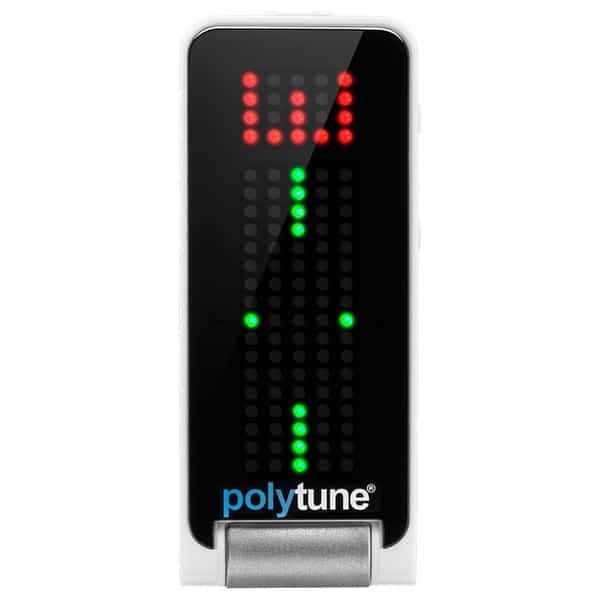
DESIGNED FOR: Guitarists of all skill levels.
OTHER INFO: Crafted from high-quality stainless steel, with strategically placed padding for enhanced grip without harming the instrument
FEATURES: PolyTune technology to quickly and accurately tune all six strings at once, chromatic (±0.05 cent) and extra accurate strobe tuning modes (±0.02 cent)
TC Electronic PolyTune Clip Guitar Tuner, White
- Ultra-bright, adaptive display for easy readouts no matter the orientation.
- Elegant yet durable design, with high-quality stainless steel clip.
- Flat tuning and capo modes.
- Battery needs to be replaced occasionally.
When you click ‘Check Price’, you’ll see there are loads of great places to buy this item. Our personal favorite is Sweetwater for the US, and Thomann and Gear4Music for the UK & Europe.
They are the largest music retailers, with excellent customer service, competitive prices, really fast shipping, and the longest guarantees.
The professional musician who wrote this article combined many things,
from the product build, manufacturer’s reputation through to feedback
from other users, to create our famous TedScore™.
Peg Winder
A peg string winder is a handy tool that makes it much easier to wind the strings onto the tuning pegs. It saves you time and ensures that the strings are wound tightly and evenly, which is important for maintaining the tuning of your mandolin.
Guitar String Winder By Gear4music
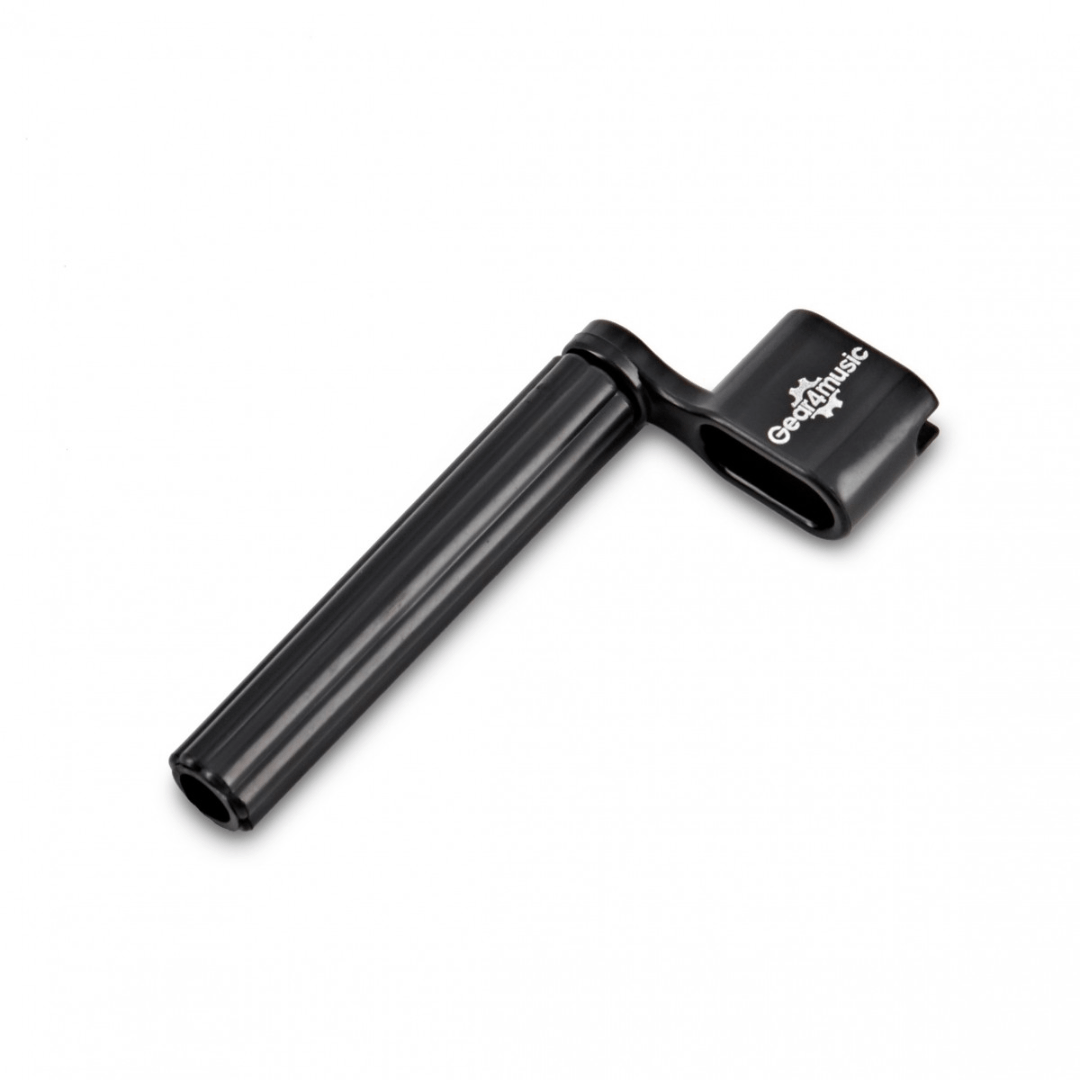
FEATURES: makes string changes a breeze, saving time and effort
OTHER INFO: Compatible with various guitar types
- Effortless and quick string changes
- Universal compatibility with different guitar types
- Ergonomic design for comfortable use
- Plastic construction may not be as durable as metal winders
When you click ‘Check Price’, you’ll see there are loads of great places to buy this item. Our personal favorite is Sweetwater for the US, and Thomann and Gear4Music for the UK & Europe.
They are the largest music retailers, with excellent customer service, competitive prices, really fast shipping, and the longest guarantees.
The professional musician who wrote this article combined many things,
from the product build, manufacturer’s reputation through to feedback
from other users, to create our famous TedScore™.
Removing the Old Strings

Before you can start stringing your mandolin, you need to remove the old strings. This is an important step to ensure your new strings are properly installed.
To begin, loosen the tuning pegs to slacken the strings. You can use a peg winder to make this process faster. Once the strings are slack, you can remove them from the tailpiece.
Detach the string from the bottom of your mandolin. The tailpiece at the bottom of your mandolin has at least eight hooks on it, where the strings attach.
Take note of the excess string and make sure to unwind it carefully. If you are not careful, the string can kink and become unusable.
Once you have removed the old strings, it’s time to clean your mandolin.
You can use a soft cloth to wipe down the tailpiece and other areas where the strings were attached.
This will help remove any dirt or debris accumulated over time.
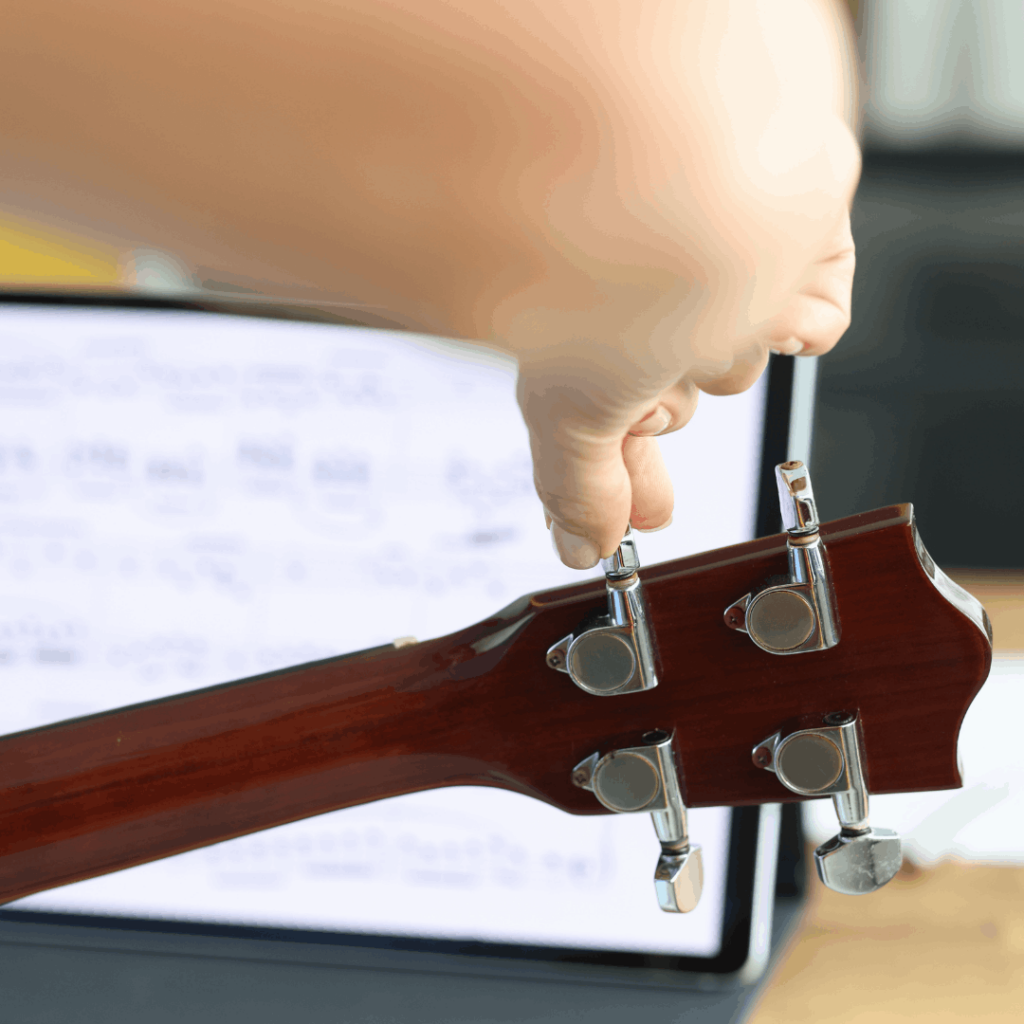
When removing the old strings, make sure to pay attention to the loop that is formed at the end of each string. This loop is what attaches the string to the tailpiece. You must remove this loop before you can install the new strings.
Finally, you can remove the tuning pegs from the headstock. This will allow you to remove the old strings from the tuning pegs easily. Make sure to keep the tuning pegs in a safe place so that you don’t lose them.
Installing the New Strings

When installing new strings on your mandolin, starting with the E strings is important. Begin by inserting the looped end of the string through the hole in the tailpiece cover.
Then, pull the top string slightly back towards the bridge and loop it around the bridge. Make sure the string loop is seated properly in the bridge and tailpiece cover.
Next, move on to the A strings. Insert the looped end of the string through the hole in the tailpiece cover and pull it towards the bridge. Loop the string around the bridge, making sure it’s seated properly.
Repeat this process for the D and G strings.
Remember to tune your mandolin after installing the new strings. Use a tuning key to adjust the tension on each string until they’re all in tune.
Check the tension on each string by pressing down on the string at the 12th fret. The string should be taut but not too tight.
Tuning and Adjusting the Strings
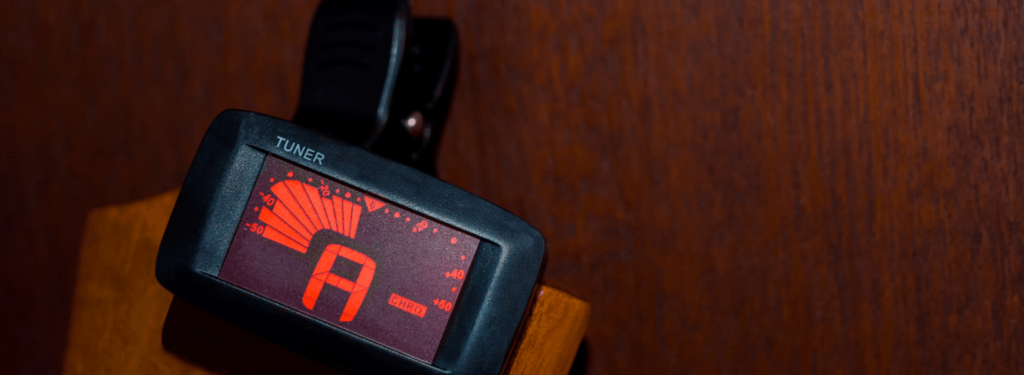
Tuning the Mandolin
When tuning your mandolin, having a good ear for music is essential. The standard tuning for a mandolin is G-D-A-E, with the G string being the thinnest and the E string being the thickest.
You can use a tuner to help you start, but fine-tuning by ear is always a good idea.
To tune your mandolin, pluck the G string and adjust the tuning key until it matches the pitch of a G note.
Repeat this process for the other strings until they match the pitches of their respective notes.
Adjusting the String Tension

String tension is an essential factor in determining the tone of your mandolin.
The sound will be dull and lifeless if the strings are too loose.
On the other hand, if the strings are too string tight together, they can snap or cause damage to your instrument.
To adjust the string tension, use the tuning keys to tighten or loosen the strings. Be careful not to over-tighten the strings, as this can cause damage to your mandolin.
When adjusting the string tension, it’s also important to consider the intonation and playability of your mandolin.
If the strings are too high off the fretboard, they will be difficult to play. On the other hand, if the strings are too low, they will buzz against the frets.
Stringing A Mandolin
Summary
Stringing a mandolin may seem like a daunting task, but it’s an essential skill for any mandolin player.
By selecting the right strings and following the step-by-step process, you can restring your mandolin quickly and efficiently.
Remember to check your strings and tuning mechanism regularly to ensure proper tuning and avoid any issues.
With a little bit of practice, you’ll be able to string your mandolin like a pro and enjoy the beautiful sound of your instrument for years to come!
Wait, there’s more!!!
Take a look at our new article on the Best Beginner Mandolin – and you’ll be surprised…
FAQ's
The standard tuning for a mandolin is G-D-A-E, with each pair of strings tuned only one string up to the same pitch. The G string is the highest-pitched string, followed by the D, A, and E strings.
To put new strings on a mandolin, remove the old ones by loosening the tuning pegs and then removing the bridge. Thread the new strings through the bridge and the first string taut tailpiece, then tighten the tuning pegs and tune the strings to the correct pitch.
It is recommended to restring a mandolin every 2-3 months if it is played regularly to maintain its sound quality. However, the frequency of restringing may vary based on factors such as the strings’ quality and the musician’s playing style.
Mandolin strings may not stay in tune for several reasons, including improper winding around the tuning pegs, worn-out strings, or issues with the instrument’s tuning mechanism. It is recommended to check the strings and tuning peg mechanism regularly to ensure proper tuning and avoid any issues.











I find your segment on gauges and their impact on sound and playability fascinating, Lewis Turner. However, it might be worth mentioning the phenomenon of inharmonic overtones in relation to string tension and mass. This might give readers a deeper understanding of why certain gauges produce brighter or warmer tones. It’s all about the balance between tension and the mandolin’s own resonant frequencies.
Interesting article, Lewis . While I agree with most of what you’ve said, I’ve got to say, the gauge of the string can vary a lot depending on what kind of music you’re into. Bluegrass players might want heavier strings for that punchy sound, right? But folk musicians could prefer lighter strings for easier fretting. Thoughts?
hey, how do you know when its time to change the strings? just got my first mandolin and kinda clueless. thanks for any advice.
Alex89, typically you’ll notice a lack of tone or difficulty tuning. It’s a good practice to change them every few months if you play regularly.
Thanks for the tips, Lewis . I’ve always been hesitant to change my mandolin strings myself, but this makes it seem doable. Appreciate the clear steps!